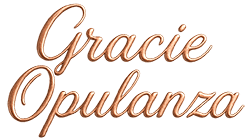In the world of sales, closing the deal is the ultimate goal. It’s the moment when all your hard work and efforts pay off. But closing a sale can often be challenging, requiring finesse, persuasion, and the right technique. In this blog, we will explore tried-and-true sales closing techniques that have proven to increase close rates.
The Power of Effective Sales Closing Techniques
Effective sales closing techniques are crucial in the world of sales. They have the power to seal the deal and increase close rates. These techniques create a sense of urgency and compel prospects to take action. By using effective sales closing methods such as the assumptive close, fear of missing out (FOMO) close, summary close, alternative close, and trial close, sales professionals can guide prospects toward making positive buying decisions. These techniques leverage psychological triggers, tap into the prospect’s needs, and provide choices that lead to a desired outcome. Implementing effective sales closing techniques can significantly enhance sales success and close rates.
The Assumptive Close
The assumptive close is a powerful technique that assumes the prospect has already made the decision to buy. It involves using language and phrases that imply the close without explicitly stating it. For example, instead of asking “Would you like to proceed with the purchase?”, you would say “When would you like the product delivered?”. By assuming the close, you guide the prospect toward making a positive decision.
The Fear of Missing Out (FOMO) Close
The Fear of Missing Out (FOMO) is a psychological trigger that can be leveraged in sales closing. By creating a sense of urgency and scarcity, you tap into the prospect’s fear of missing out on a great opportunity. Strategies such as limited-time offers, exclusive deals, or showcasing the product’s popularity can trigger the FOMO response and push prospects to take immediate action.
The Summary Close
The summary close involves recapping the benefits and value proposition of the product or service to reinforce the prospect’s buying decision. By summarizing the key points discussed during the sales process, you remind the prospect of the value they will gain from making a purchase. This technique helps solidify their decision and increases the likelihood of closing the sale.
The Alternative Close
The alternative close provides prospects with choices, guiding them toward a buying decision. By presenting alternatives, such as different pricing packages or delivery options, you give prospects a sense of control while still leading them toward the desired outcome. For example, you could ask, “Would you prefer the standard package or the premium package?”. This technique helps overcome indecisiveness and moves prospects closer to closing the sale.
The Trial Close
The trial close is an effective technique to gauge the prospect’s interest and readiness to buy throughout the sales process. By asking trial close questions or statements, you can assess if the prospect is leaning towards making a purchase. Examples include “How would our product fit into your current workflow?” or “If we were able to address your concerns, would you be ready to move forward?”. Trial closes help address objections or concerns before the final closing stage.

In conclusion, implementing tried-and-true sales closing techniques can significantly increase close rates. The assumptive close, Fear of Missing Out (FOMO) close, summary close, alternative close, and trial close are powerful techniques that have proven effective. By understanding the psychology behind these techniques and incorporating them into your sales process, you can boost your close rates and achieve greater success in sales.
Remember, closing a sale is not about being pushy or aggressive, but rather about building trust, understanding your prospect’s needs, and presenting solutions that meet those needs. With practice and mastery of these techniques, you’ll become a skilled closer and achieve higher close rates.
















You must be logged in to post a comment.